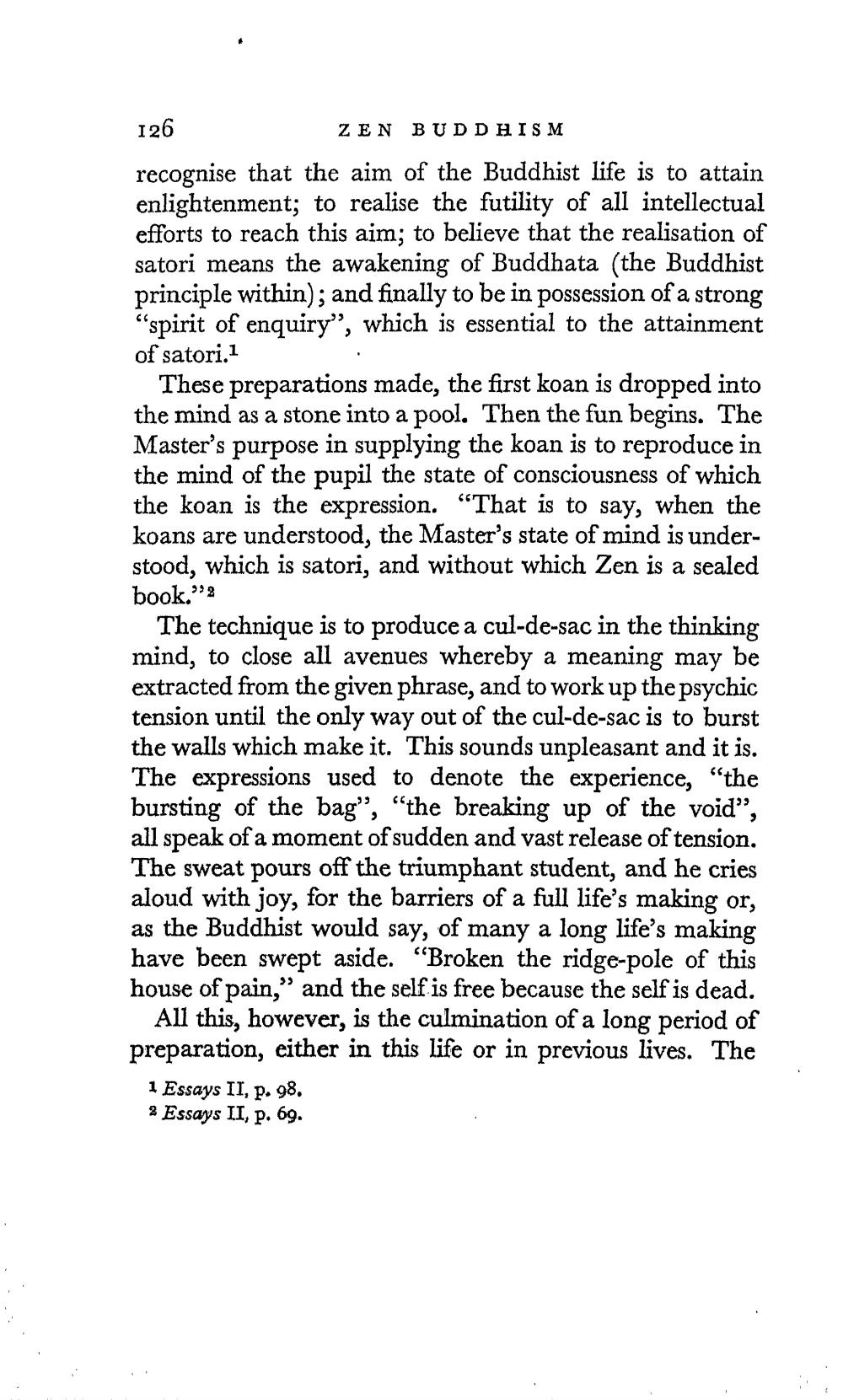________________
126
ZEN BUDDHISM recognise that the aim of the Buddhist life is to attain enlightenment; to realise the futility of all intellectual efforts to reach this aim; to believe that the realisation of satori means the awakening of Buddhata (the Buddhist principle within); and finally to be in possession of a strong “spirit of enquiry", which is essential to the attainment of satori.1
These preparations made, the first koan is dropped into the mind as a stone into a pool. Then the fun begins. The Master's purpose in supplying the koan is to reproduce in the mind of the pupil the state of consciousness of which the koan is the expression. “That is to say, when the koans are understood, the Master's state of mind is understood, which is satori, and without which Zen is a sealed book."
The technique is to produce a cul-de-sac in the thinking mind, to close all avenues whereby a meaning may be extracted from the given phrase, and to work up the psychic tension until the only way out of the cul-de-sac is to burst the walls which make it. This sounds unpleasant and it is. The expressions used to denote the experience, “the bursting of the bag”, “the breaking up of the void", all speak of a moment of sudden and vast release of tension, The sweat pours off the triumphant student, and he cries aloud with joy, for the barriers of a full life's making or, as the Buddhist would say, of many a long life's making have been swept aside. “Broken the ridge-pole of this house of pain," and the self is free because the self is dead.
All this, however, is the culmination of a long period of preparation, either in this life or in previous lives. The
1 Essays II, p. 98. 2 Essays II, p. 69.




